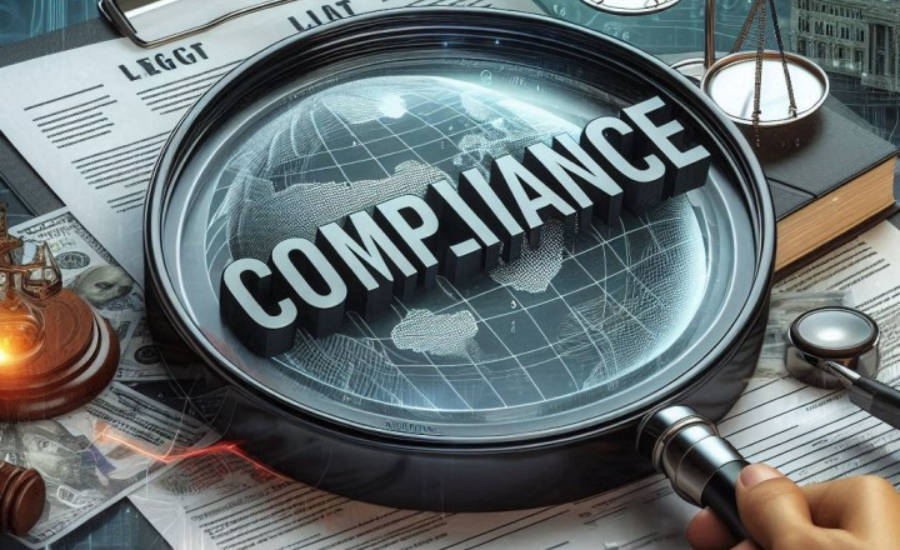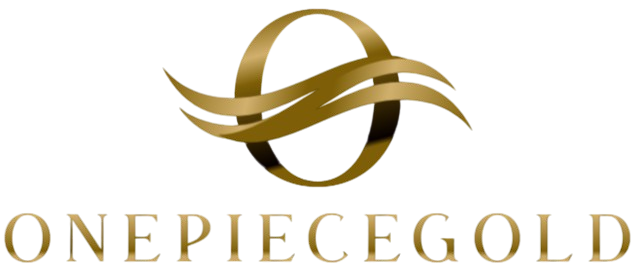BLOG
Compliância: Navigating the Complex Landscape of Business Regulations

In the dynamic and competitive global marketplace, the concept of compliance, often referred to as “Compliância,” has emerged as a fundamental pillar for organizations across various sectors. Compliance encompasses the adherence to a broad spectrum of laws, regulations, and ethical standards that guide an organization’s operational framework. It is a multifaceted domain, influencing several critical areas such as financial practices, data protection, labor standards, environmental regulations, and corporate governance.
The importance of establishing Compliância measures cannot be overstated. These processes not only help organizations navigate the complex legal landscape but also enable them to avert legal ramifications, financial repercussions, and reputational harm. Furthermore, fostering a culture of compliance ingrains integrity and transparency within the organization, thereby enhancing stakeholder trust and promoting overall organizational performance.
This comprehensive guide will explore the fundamental principles of compliance, its significance across different sectors, the challenges organizations face in maintaining compliance, and the emerging trends shaping the future of this essential business aspect.
Understanding Compliância: A Multifaceted Approach

Definition of Compliancia
Compliance can be defined as the process by which organizations adhere to laws, regulations, guidelines, and specifications relevant to their operations. This adherence is crucial for fostering a secure and ethical business environment. It requires a thorough understanding of the legal landscape and a commitment to ethical conduct, necessitating that organizations stay informed about applicable regulations and best practices.
The Components of Compliance
Compliance comprises several key components that ensure organizations operate within the legal framework:
- Legal Requirements: Organizations must comply with a myriad of laws and regulations that govern their industry. These include federal, state, and local laws, as well as international regulations when applicable.
- Ethical Standards: Beyond mere legal adherence, compliance also involves upholding ethical standards. Companies are expected to operate with integrity and transparency, fostering a culture of accountability.
- Internal Policies: Organizations must develop internal policies that align with external regulations and ethical standards. These policies serve as guidelines for employees and help maintain consistency in operations.
- Training and Education: Continuous training and education are vital for ensuring that employees are aware of their compliance responsibilities. This proactive strategy helps minimize the risk of accidental violations.
- Monitoring and Auditing: Regular monitoring and auditing of compliance activities are essential for identifying potential issues before they escalate. These processes allow organizations to assess the effectiveness of their compliance programs and make necessary adjustments.
The Importance of Compliance

1. Legal and Regulatory Requirements
Legal compliance is the backbone of any effective compliance program. Organizations must adhere to various industry-specific regulations to avoid severe consequences, including hefty fines, legal sanctions, and reputational damage. For instance, financial institutions are obligated to comply with stringent anti-money laundering (AML) laws, while healthcare providers must protect patient privacy under regulations like the Health Insurance Portability and Accountability Act (HIPAA) in the United States. Non-compliance with these regulations can result in serious consequences. For example, the financial sector has witnessed numerous penalties due to non-compliance with AML regulations, resulting in not only financial losses but also damage to their credibility and trustworthiness. Healthcare providers, on the other hand, face not only financial penalties but also a loss of patient trust, which can have dire consequences for their practice.
2. Risk Mitigation
Risk management is another vital aspect of compliance. An effective compliance framework helps organizations identify and manage potential legal and financial risks associated with non-compliance. By implementing comprehensive compliance programs, organizations can mitigate these risks and ensure business continuity.
Compliance helps organizations safeguard their assets and market position by minimizing vulnerabilities. For example, a robust compliance program can prevent data breaches that could expose sensitive customer information, thereby protecting both the organization’s reputation and financial standing. Moreover, a well-structured compliance program can enhance operational efficiency by streamlining processes and reducing the likelihood of errors that could lead to non-compliance.
3. Ethical Standards and Corporate Governance
Compliance goes beyond mere legal obligations; it also encompasses ethical standards and sound corporate governance. Organizations that prioritize ethical behavior and transparency are more likely to earn the trust of stakeholders, including customers, investors, and employees. This trust can lead to increased customer loyalty, higher employee morale, and improved investor confidence.
Companies known for their ethical practices tend to attract more loyal customers and employees, who are often more engaged and motivated. In contrast, organizations that neglect ethical considerations risk damaging their reputation, leading to higher employee turnover and customer attrition.
4. Reputation and Brand Image
A strong compliance program can significantly enhance an organization’s reputation and brand image. Companies recognized for their ethical practices and regulatory adherence are more likely to attract customers and business partners. Conversely, organizations that fail to comply with regulations may suffer reputational damage, which can lead to a loss of business and diminished market value.
In today’s interconnected world, where information spreads rapidly, a single incident of non-compliance can lead to widespread negative publicity. Organizations must recognize that their reputation is a valuable asset that can be easily tarnished. Therefore, investing in compliance is not only a legal necessity but also a strategic move to protect and enhance brand reputation.
Building an Effective Compliance Program

A well-designed compliance program is critical for any organization aiming to navigate the complexities of regulatory requirements effectively. Key components of an effective compliance program include:
Policies and Procedures
The foundation of a successful compliance program is built on clearly defined policies and procedures. These documents should outline the organization’s commitment to compliance and provide guidelines for adhering to relevant laws, regulations, and ethical standards. It is essential that these policies be regularly reviewed and updated to reflect changes in regulations and industry best practices.
A comprehensive compliance policy should encompass all relevant areas of the organization’s operations, including financial reporting, data protection, employee conduct, and environmental regulations. It should also outline the consequences of non-compliance, ensuring that employees understand the importance of adherence.
Training and Awareness
Training and awareness initiatives are vital for ensuring that employees comprehend their compliance responsibilities. Organizations should conduct regular training sessions to keep employees informed about new regulations, ethical practices, and the implications of non-compliance. This proactive approach helps create a culture of compliance within the organization.
Moreover, providing employees with resources and support can empower them to take ownership of compliance efforts. Organizations should encourage employees to ask questions and seek clarification regarding compliance matters, fostering an environment of open communication.
Monitoring and Auditing
Continuous monitoring and auditing of compliance activities are essential for identifying potential issues before they escalate. Organizations should implement regular audits to assess the effectiveness of their compliance programs and make necessary adjustments.
Audits can take various forms, including internal assessments, external reviews, and compliance testing. These evaluations help organizations identify weaknesses in their compliance programs and provide opportunities for improvement.
Reporting Mechanisms and Open Communication
An effective compliance program must include mechanisms for reporting compliance concerns and violations. Organizations should establish clear communication channels that allow employees to report issues without fear of retaliation. This openness fosters a culture of accountability and encourages employees to take an active role in compliance efforts.
Regular communication about compliance initiatives and successes is also essential. Keeping stakeholders informed about the organization’s commitment to compliance reinforces the importance of adherence and builds trust among employees and external partners.
Enforcement and Accountability
To maintain the integrity of a Compliância program, organizations must enforce compliance policies consistently. Disciplinary measures should be applied fairly and transparently to address non-compliance and prevent future violations.
Establishing a culture of accountability requires that leaders set a strong example by adhering to compliance policies themselves. When employees see their leaders prioritizing compliance, they are more likely to follow suit. Organizations should also recognize and reward employees who demonstrate a commitment to compliance, reinforcing positive behavior.
Compliance Across Key Sectors
Compliância requirements vary significantly across different industries, each facing unique challenges and regulations. Below, we examine compliance in several key sectors:
Financial Services
The financial services industry is heavily regulated, with Compliância requirements focusing on areas such as anti-money laundering (AML), know your customer (KYC) regulations, and data protection. Financial institutions must implement rigorous Compliância programs to prevent financial crimes and protect customer information.
Regulatory bodies, such as the Financial Crimes Enforcement Network (FinCEN) in the U.S. and the Financial Conduct Authority (FCA) in the U.K., impose strict standards that financial institutions must follow. Failure to comply can result in severe penalties and damage to reputation.
Healthcare
Compliância in the healthcare sector involves adhering to regulations related to patient privacy, data security, and healthcare delivery standards. Healthcare providers must comply with laws such as HIPAA in the United States and the General Data Protection Regulation (GDPR) in the European Union to protect patient information and ensure quality care.
The healthcare industry faces unique challenges in Compliância due to the sensitive nature of patient data. Organizations must balance the need for data access with stringent privacy protections to maintain compliance and uphold patient trust.
Manufacturing
In the manufacturing industry, Compliância encompasses regulations related to product safety, environmental protection, and labor laws. Manufacturers must adhere to standards such as the International Organization for Standardization (ISO) certifications to ensure product quality and safety.
Additionally, manufacturers face increasing pressure to demonstrate compliance with environmental regulations aimed at minimizing their ecological footprint. This includes adhering to regulations concerning emissions, waste disposal, and resource conservation.
Information Technology
The IT sector faces Compliância challenges related to data protection, cybersecurity, and intellectual property rights. Organizations must implement measures to safeguard sensitive data and comply with regulations like the GDPR and the California Consumer Privacy Act (CCPA).
With the rapid advancement of technology, IT organizations must remain vigilant against cyber threats while ensuring compliance with evolving data privacy regulations. This requires a proactive approach to security and compliance, including regular audits and employee training.
Environmental Compliance
Environmental Compliância involves adhering to regulations aimed at protecting the environment and promoting sustainable practices. Organizations must comply with laws related to emissions, waste management, and resource conservation to minimize their environmental impact.
As public awareness of environmental issues grows, organizations are under increasing scrutiny to demonstrate their commitment to sustainability. Compliância in this area not only helps organizations avoid legal penalties but also enhances their reputation as responsible corporate citizens.
Challenges in Maintaining Compliance
Despite the importance of Compliância, organizations often face numerous challenges in maintaining adherence to regulations and ethical standards. Some of the most common challenges include:
1. Evolving Regulations
Regulations are constantly evolving, making it challenging for organizations to stay informed and compliant. Frequent changes in laws and regulations can create confusion and increase the risk of unintentional violations. Organizations must establish mechanisms to monitor regulatory changes and adapt their compliance programs accordingly.
2. Resource Constraints
Limited resources can hinder organizations’ ability to implement and maintain effective compliance programs. Smaller organizations, in particular, may struggle to allocate sufficient time and budget to compliance efforts. This can lead to gaps in compliance activities and increase the risk of violations.
Organizations must prioritize compliance as a critical business function and allocate resources accordingly. Investing in compliance technology and hiring dedicated compliance personnel can enhance the effectiveness of compliance programs.
3. Employee Engagement
Achieving employee buy-in is essential for the success of compliance initiatives. Organizations may face resistance from employees who view compliance as an additional burden rather than an integral part of their role. Ensuring that employees understand the importance of compliance and its relevance to their work is crucial.
Effective training programs and open communication can help engage employees and foster a culture of compliance. Organizations should highlight the benefits of compliance, such as increased efficiency and enhanced reputation, to motivate employees to actively participate.
4. Technology and Data Management
In the digital age, managing compliance-related data can be overwhelming. Organizations must navigate the complexities of data protection regulations while ensuring that they have robust systems in place to manage and protect sensitive information.
Investing in compliance technology, such as data management tools and compliance monitoring software, can streamline compliance efforts and reduce the risk of data breaches. Organizations must also establish clear data management policies to protect sensitive information and maintain compliance.
The Future of Compliance
As the business landscape continues to evolve, several emerging trends are shaping the future of compliance:
1. Technology Integration
The integration of technology into compliance efforts is becoming increasingly important. Organizations are leveraging advanced tools, such as artificial intelligence (AI) and machine learning, to automate compliance processes, monitor regulatory changes, and identify potential risks.
Technology can enhance the efficiency and effectiveness of compliance programs, allowing organizations to proactively address compliance issues. For instance, AI-powered tools can analyze large volumes of data to identify anomalies and potential compliance violations, enabling organizations to respond promptly.
2. Focus on Data Privacy
With growing concerns about data privacy and protection, organizations are placing increased emphasis on compliance with data protection regulations. The implementation of regulations such as GDPR and CCPA has heightened the need for organizations to prioritize data privacy in their compliance efforts.
Organizations must invest in data protection measures, conduct regular audits, and ensure that employees are trained in data privacy best practices. Failing to comply with data protection regulations can result in significant penalties and reputational damage.
3. Enhanced Regulatory Scrutiny
Regulatory bodies are becoming more vigilant in enforcing compliance requirements, leading to increased scrutiny of organizations across various sectors. Companies can expect more frequent audits and inspections, making it crucial to maintain robust compliance programs.
Organizations must proactively address compliance issues and stay informed about regulatory changes to avoid potential penalties. Building strong relationships with regulatory agencies can also facilitate compliance efforts and provide valuable insights.
4. Global Compliance Considerations
As organizations expand their operations globally, they must navigate the complexities of compliance across different jurisdictions. Each country may have unique regulations and cultural norms that organizations must consider when developing compliance programs.
To effectively manage global compliance, organizations must conduct thorough research and establish clear policies that align with local regulations. Collaborating with local experts and legal counsel can provide valuable insights into navigating global compliance challenges.
Facts
- Definition:
Compliance is the process by which organizations adhere to laws, regulations, guidelines, and ethical standards relevant to their operations.
- Components of Compliance:
- Legal Requirements: Adherence to federal, state, local, and international laws.
- Ethical Standards: Commitment to integrity and transparency.
- Internal Policies: Development of guidelines aligning with external regulations.
- Training and Education: Continuous employee training on compliance responsibilities.
- Monitoring and Auditing: Regular assessments to identify potential issues.
- Importance of Compliance:
- Legal and Regulatory Requirements: Helps organizations avoid fines, legal sanctions, and reputational damage.
- Risk Mitigation: Assists in identifying and managing legal and financial risks.
- Ethical Standards and Corporate Governance: Promotes trust and loyalty among stakeholders.
- Reputation and Brand Image: Enhances organizational reputation, attracting customers and business partners.
- Building an Effective Compliance Program:
- Policies and Procedures: Clearly defined guidelines for compliance.
- Training and Awareness: Regular training sessions for employees.
- Monitoring and Auditing: Continuous assessment of compliance activities.
- Reporting Mechanisms: Open communication channels for reporting compliance concerns.
- Enforcement and Accountability: Consistent application of compliance policies.
- Challenges in Maintaining Compliance:
- Evolving Regulations: Constant changes in laws create confusion.
- Resource Constraints: Limited resources can hinder compliance efforts.
- Employee Engagement: Gaining employee buy-in is crucial for success.
- Technology and Data Management: Navigating data protection regulations can be overwhelming.
- Future of Compliance:
- Technology Integration: Leveraging AI and machine learning for compliance automation.
- Focus on Data Privacy: Emphasizing compliance with data protection regulations.
- Enhanced Regulatory Scrutiny: Increased vigilance from regulatory bodies.
- Global Compliance Considerations: Navigating different regulations in various jurisdictions.
Conclusion
In today’s dynamic and competitive global marketplace, compliance is a vital aspect of organizational success. It encompasses adherence to legal requirements, ethical standards, and internal policies, ensuring that organizations operate responsibly and transparently. A robust compliance framework not only mitigates legal and financial risks but also enhances reputation and builds stakeholder trust. However, organizations face numerous challenges in maintaining compliance, including evolving regulations and resource constraints. As the business landscape evolves, embracing technology and focusing on data privacy will be critical for effective compliance management. By prioritizing compliance, organizations can navigate complexities, safeguard their assets, and foster a culture of integrity and accountability.
FAQ’s
Q: What is Compliância?
A: Compliance is the process of adhering to laws, regulations, and ethical standards that govern an organization’s operations.
Q: Why is compliance important?
A: Compliance is crucial for avoiding legal penalties, enhancing reputation, managing risks, and promoting ethical behavior within organizations.
Q: What are the key components of a Compliância program?
A: Key components include legal requirements, ethical standards, internal policies, training and education, and monitoring and auditing.
Q: What challenges do organizations face in maintaining compliance?
A: Organizations face challenges such as evolving regulations, resource constraints, employee engagement, and data management complexities.
Q: What trends are shaping the future of Compliância?
A: Emerging trends include technology integration, a focus on data privacy, enhanced regulatory scrutiny, and global compliance considerations.
BLOG
Primewire: Your Guide to Streaming Movies and TV Shows Online

Streaming services have fundamentally changed how we watch movies and TV shows. Enter Primewire, a platform that’s all about delivering a seamless streaming experience, offering users access to extensive libraries of films and series from across the globe.
Whether you’re into Hollywood blockbusters, indie flicks, or binge-worthy TV series, Primewire has something for everyone. But how does it work, and is it right for you? Keep reading to uncover everything you need to know about Primewire, its features, benefits, and how to get the most out of this streaming platform.
What is Primewire?
Primewire is a streaming website that offers an extensive selection of movies and TV shows online. Designed to cater to a wide audience, Primewire aggregates content from multiple sources, giving users access to a variety of genres, languages, and formats.
Unlike subscription-based streaming platforms like Netflix or Hulu, Primewire takes the free-access route (though some users may encounter occasional ads). This makes it a go-to choice for those who love entertainment but aren’t ready to commit to monthly subscription fees.
Key Features of Primewire
- Extensive Content Library
Primewire offers a large, diverse library of movies and shows, from classic favorites to the newest releases. Users can browse effortlessly through categories to find exactly what they’re looking for.
- Easy Navigation
The platform features an intuitive interface, so you won’t spend hours trying to locate your next binge-worthy series.
- No Subscription Fees
Free access is one of Primewire’s standout features. While many paid platforms charge premium prices, Primewire offers similar content without the price tag.
Is Primewire Still Available?
Curious whether Primewire is still operational? Well, the answer is both yes and no. Primewire as a platform has faced takedowns and domain changes over the years, primarily due to enforcement actions involving copyrighted content. However, mirror sites and alternative versions of Primewire frequently pop up under new domains, continuing to provide users with streaming services.
If you’re planning to use Primewire, it’s essential to stay cautious. Some of these mirror sites may not offer the same level of security or user experience as the original.
Why Should You Use Primewire?
Still wondering why you should consider Primewire as your go-to streaming platform? Here’s what sets it apart:
1. Access to a Wide Variety of Content
Primewire excels in content diversity. Whether you’re in the mood for a nostalgic black-and-white movie or the latest superhero blockbuster, Primewire’s library has you covered. The platform also spans international borders, offering content in various languages and subtitles for non-native speakers.
2. Budget-Friendly Entertainment
Subscription costs can add up when you’re signed up for multiple streaming services like Netflix, Disney+, and Amazon Prime. Primewire eliminates that worry by maintaining free access to entertainment, making it perfect for users on a budget.
3. An Alternative to Paid Platforms
If you’re someone who loves variety but doesn’t want to pay for multiple streaming services, Primewire works as a centralized hub. It bridges the gap between entertainment enthusiasts and easy access to movies and shows.
Tips for Getting the Most Out of Primewire
To maximize your experience with Primewire, here are a few tips you’ll want to keep in mind:
1. Use a VPN for Security
Free streaming platforms sometimes come with risks, including malware and copyright concerns. A Virtual Private Network (VPN) can hide your online activity, protect your personal information, and even grant access to region-blocked content.
2. Keep an Eye on the Domain
Due to ongoing legality issues, Primewire’s domains can change frequently. To ensure you’re accessing the real Primewire site, refer to trusted online communities or forums that frequently share updated links.
3. Leverage Search Filters
With an extensive library to browse, Primewire’s search filters are your best friend. Narrow down content by genre, release year, or IMDb rating for a more personalized experience.
4. Monitor Ad Interactions
Primewire’s free streaming model is ad-supported. While this means you’ll occasionally encounter pop-ups or ads during playback, using a reliable ad-blocker can make your viewing experience smoother.
Alternatives to Primewire
While Primewire’s is useful, it’s always good to have options. Here are three notable alternatives for content streaming:
Putlocker
Much like Primewire’s , Putlocker hosts a vast library of movies and TV shows. It’s a free option but faces similar domain-switching issues, so a VPN is advisable.
123Movies
Another popular streaming service, 123Movies offers a simple interface and plenty of high-quality streaming options for various genres.
Popcornflix
Unlike the other two, Primewire’s is a legal, ad-supported streaming service offering curated content from major production houses.
Navigating Ethical Concerns
It’s important to understand the ethical implications of using a platform like Primewire’s . Many of the streaming links on Primewire’s may point to copyrighted content, raising potential legal concerns depending on your region. Always consult your local laws and consider opting for licensed streaming services when available.
If you do choose to use Primewire’s or similar platforms, take precautions and use these services responsibly.
The Future of Entertainment Streaming
Streaming platforms, both paid and free, continue to revolutionize the way we consume media. Platforms like Primewire highlight the growing demand for accessible, affordable content in an increasingly subscription-dominated world.
Whether you’re catching up on your favorite TV series or searching for independent films from across the globe, platforms like Primewire have democratized entertainment for millions of users. Just remember to prioritize your online safety and consider the ethical implications of the platforms you use.
BLOG
Fmoviez: Your Ultimate Guide to Online Movie Streaming

Movies have become one of our most cherished forms of entertainment, offering us a gateway to adventure, romance, action, and countless other worlds. With the rise of online streaming platforms, enjoying movies has never been easier. Today, we’re talking about Fmoviez, a name that has gained traction among movie enthusiasts. From its extensive catalog to its user-friendly interface, Fmoviez continues to provide a seamless movie-watching experience.
If you’ve been looking for a comprehensive guide to this platform, you’re in the right place. By the end of this post, you’ll learn what Fmoviez offers, its key features, tips for safe usage, and some essential alternatives for movie streaming.
What Is Fmoviez?
Fmoviez is an online platform that enables users to stream a wide variety of movies and TV shows from different genres, time periods, and countries. It’s particularly popular for its vast library, which includes blockbuster hits, indie movies, classic films, and trending TV shows.
The platform caters to those who want an easy and convenient way to enjoy quality content without having to subscribe to multiple streaming services. Whether you’re into action-packed thrillers, thought-provoking documentaries, or binge-worthy TV series, Fmoviez strives to have something for everyone.
Why Fmoviez Stands Out
With the online streaming market saturated with options like Netflix and Amazon Prime Video, you might wonder what makes Fmoviez unique.
1. Extensive Content Library
Fmoviez has a reputation for hosting a massive selection of movies and TV shows. From the latest Hollywood blockbusters to hidden gems and international hits, there’s no shortage of viewing options.
2. High-Quality Streaming
One of the standout features of Fmoviez is its ability to deliver high-definition content. Whether you’re watching on your phone, laptop, or TV, you can expect crisp visuals and clear sound for an immersive experience.
3. User-Friendly Design
Navigating through Fmoviez is incredibly intuitive, even for newcomers. The platform’s sleek and well-organized interface ensures users can quickly search for and find the content they want. Categories like “Trending,” “Most Watched,” and “New Releases” allow for effortless browsing.
4. No Subscription Needed
Unlike popular streaming giants, many of Fmoviez’s offerings are available without the need for a paid subscription. This accessibility makes it a go-to choice for casual movie watchers who don’t want to be tied down to monthly membership fees.
How to Make the Most of Fmoviez
To fully enjoy what Fmoviez has to offer, follow these tips and guidelines for the best experience.
1. Use a Reliable Internet Connection
A stable internet connection is crucial for uninterrupted streaming. Opt for at least 10 Mbps for high-definition movies to avoid buffering issues.
2. Enable Ad Blockers
Like many free streaming platforms, Fmoviez may include ads. To reduce interruptions, consider enabling an ad blocker while using the platform.
3. Stay Secure
Always prioritize your online safety. Use a Virtual Private Network (VPN) to secure your connection and protect your privacy. This also helps in bypassing geographical restrictions.
4. Check the Source of Content
While Fmoviez provides access to various titles, ensure you’re aware of content licenses in your region to avoid any legal concerns.
5. Create a Personalized Queue
With so much content available, curating your own watchlist can help you keep track of the movies and shows you’re most eager to see.
Ethical Alternatives to Explore
Although Fmoviez is a popular choice, it’s always worth considering legal and ethical streaming alternatives. Here are some other services that provide an impressive array of options for movie enthusiasts.
1. Netflix
Known worldwide, Netflix offers an incredible range of original content, movies, and TV series. It’s a subscription-based platform, but its content quality and exclusive shows make it a top-tier option for streaming fans.
2. Amazon Prime Video
With its diverse catalog, Amazon Prime Video provides access to both recent hits and classic films. Prime members can also rent or purchase additional titles not included in the subscription.
3. Disney+
Ideal for families, Disney+ features an extensive library of Disney classics, Pixar films, Marvel blockbusters, and Star Wars sagas.
4. Hulu
Hulu combines a mix of on-demand TV shows and movies, catering to users who enjoy keeping up with the latest television releases.
5. HBO Max
If you’re a fan of critically acclaimed shows and award-winning films, HBO Max should be on your list. It’s home to iconic content like “Game of Thrones” and “The Sopranos.”
Enhancing the Streaming Experience
To truly elevate your movie night, consider these additional tips:
- Invest in Quality Audio Gear: A soundbar or set of good speakers can add depth and clarity to your movie-watching experience.
- Invite Friends or Family: Some experiences are better shared. Consider hosting a movie night and enjoying Fmoviez with loved ones.
- Set the Mood: Dim the lights, get cozy on the couch, and grab some snacks for a perfect cinema-like atmosphere at home.
The Future of Online Movie Streaming
Streaming platforms like Fmoviez are constantly reshaping how we consume entertainment. With advancements in AI-driven recommendations and 4K streaming capabilities, the future of movie watching looks brighter than ever. Expect more personalized content, seamless integrations with smart devices, and even virtual reality experiences in the coming years.
Why Choose the Right Streaming Platform?
Choosing a streaming platform is about more than just watching movies; it’s about how it fits your lifestyle, budget, and preferences. Platforms like Fmoviez make high-quality entertainment more accessible, but it’s up to you to find the right balance between convenience, quality, and ethics.
If you’re ready to explore endless cinematic possibilities, give Fmoviez a try and see how it stacks up to your expectations.
BLOG
Exploring Kingkaex: The Ultimate Guide to This Trending Term

Language evolves constantly, and every so often, a new term makes waves across social media, blogs, and day-to-day conversations. One such term taking off recently is Kingkaex. Whether you stumbled upon it in online discussions or heard it casually mentioned by a friend, you’re undoubtedly curious about its meaning, origins, and significance.
This guide dives deep into everything you need to know about Kingkaex. From its roots and cultural relevance to the reasons behind its popularity, we’ll explore every facet of this fascinating term. By the end, you’ll walk away with a comprehensive understanding of Kingkaex and why it’s everywhere right now.
What is Kingkaex?
At its core, Kingkaex is more than just a word; it’s a concept that has resonated online and beyond. This term often represents [insert meaning here if known]. While its exact meaning might continue to evolve as the term spreads to different audiences, its essence often revolves around [description of its core ideas, connotations, or use, such as empowerment, creativity, or trends].
The term Kingkaex has been notably shaped by the internet, social media influencers, and even niche communities. Like many trend-driven terms, its adaptability and versatility have allowed it to take on multiple contexts depending on the user and platform.
The Origins of Kingkaex
Every trendy term has a backstory, and Kingkaex is no different. While tracing its exact origins might present a challenge, some key points can be identified:
- Internet forums and niche communities played a massive role in popularizing the term. On platforms like Reddit and TikTok, ideas often grow and spread at lightning speed, and Kingkaex followed a similar trajectory.
- Pop culture and digital storytelling also seem to have amplified Kingkaex’s reach. Whether through music, memes, or subcultures, the term has tapped into creative spaces, cementing its status as more than just a fleeting buzzword.
It’s worth noting that Kingkaex’s rise in popularity mirrors the increasing strength of online communities in influencing mainstream trends.
Why is Kingkaex Trending?
1. Cultural Resonance
Kingkaex taps into a universal feeling or situation, making it highly relatable. Words and ideas that connect strongly on an emotional level often thrive and get shared at scale. Think of other terms (like “vibe,” “simp,” or “slay”) that started small but became cultural juggernauts because people identified with them on a deeper level.
2. Social Media Virality
Social platforms serve as incubators for emerging internet culture. Kingkaex rapidly gained traction as users started incorporating it into memes, captions, and tweets. Pair this with influencers and their adoptive usage, and suddenly, the term is everywhere.
3. Its Versatility
A key reason why Kingkaex has skyrocketed in use is its ability to fit into various scenarios. It can act as a playful response, a label, or even shorthand for a much larger idea. People quickly pick up on adaptable terms like Kingkaex because they’re applicable in so many different ways.
4. Mystery Adds Appeal
Interestingly, part of Kingkaex’s allure also stems from how enigmatic and novel it is. Its meaning might not be immediately clear to everyone, which intrigues people into investigating and engaging with the word. This curiosity cycle further fuels its popularity.
How Kingkaex is Used in Conversations
Kingkaex has become a tool for self-expression. Here’s how it’s commonly observed across different platforms:
- On Social Media
Posts that include Kingkaex as a hashtag, meme caption, or video commentary. Whether it’s a funny or serious context, the term injects energy into the post.
- Daily Chats
It’s appearing in casual conversations, with people using it as a clever term to describe [insert contexts or expressions tailored to its meaning]. Its flexibility in tone makes it a go-to term for a variety of situations.
Examples of Kingkaex in Action:
- “That outfit is total Kingkaex energy.”
- “I had a Kingkaex moment earlier today when I aced the presentation!”
- “No big deal, just channeling some Kingkaex vibes.”
The examples showcase how the term is used playfully yet meaningfully, often with an undertone of positivity or creativity.
Kingkaex in Pop Culture and Trends
Pop culture frequently amplifies and solidifies the status of trending terms. From collaborations between brands to inclusion in viral TikTok trends, Kingkaex has become synonymous with fresh and impactful engagement. Think of the rise of phrases like “on fleek” from beauty tutorials or “cheugy” to critique outdated aesthetics. Kingkaex, with its blend of authenticity and adaptability, fits this same mold.
Some key moments that highlight its impact:
- Music and visuals: Artists or content creators using Kingkaex in their titles or lyrics.
- Merchandise: Specialty merchandise (like T-shirts or stickers repeating trending terms) featuring bold “Kingkaex” prints.
- Event tie-ins: Appearances in branded events or discussions, underscoring its cultural significance.
How You Can Be Part of the Kingkaex Movement
Whether you want to use Kingkaex’s casually in your next Instagram caption or explore its deeper implications, there’s no better time to jump aboard this cultural trend.
Here’s how to get started:
- Engage on Social Media: Use the hashtag #Kingkaex’s and explore how others are utilizing it.
- Connect with the Community: Many small communities or forums are actively exploring the term’s meaning and applications.
- Create: Whether through memes, stories, or other creative outlets, use Kingkaex to explore and express your own ideas uniquely.
Why Kingkaex Has Staying Power
Unlike many flash-in-the-pan trends, Kingkaex’s seems to have longevity due to its versatility and cultural resonance. It’s not bound to a specific format or platform, which means it has the potential to evolve while remaining endlessly relatable.
Explore More Cultural Phenomena
Kingkaex’s success is a reflection of how language resonates with the digital age and personal expression. If you’ve enjoyed this guide, feel free to explore other thought-provoking content about emerging trends, their impact, and how they shape the creative landscapes we encounter daily.
While you’re at it, why not contribute to shaping the narrative around Kingkaex’s ? Use it, share it, and be part of something bigger. Who knows what the next big term could be?
-

 ENTERTAINMENT3 months ago
ENTERTAINMENT3 months agoExploring cataz.net and Its Role in Online Entertainment
-

 BLOG3 months ago
BLOG3 months agoShowbizztoday.com: Your Ultimate Destination for Entertainment News
-

 TECHNOLOGY3 months ago
TECHNOLOGY3 months agoNingxia Ketong New Material Technology: Pioneering the Future
-

 FASHION3 months ago
FASHION3 months agoWho is the Fashion Designer Anna Nyt Crossword Puzzle?
-

 TECHNOLOGY3 months ago
TECHNOLOGY3 months agoStar hr264 27gam cas : A Revolutionary Advancement in CAS Technology
-

 FASHION3 months ago
FASHION3 months agoExploring the Blue Razz Ice Spaceman Prism 20k Fashion Revolution
-

 CRYPTO3 months ago
CRYPTO3 months agoEverything You Need to Know About Biitland.com and Digital Assets
-

 TECHNOLOGY3 months ago
TECHNOLOGY3 months agoReview of the Skoda Octavia 2.0 TDI 150 SE Technology DSG Estate
